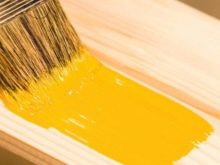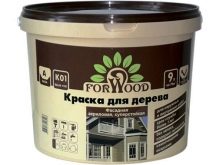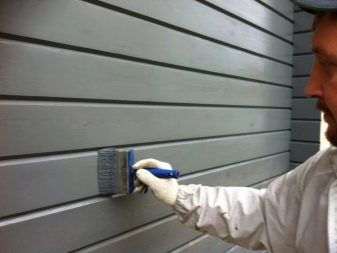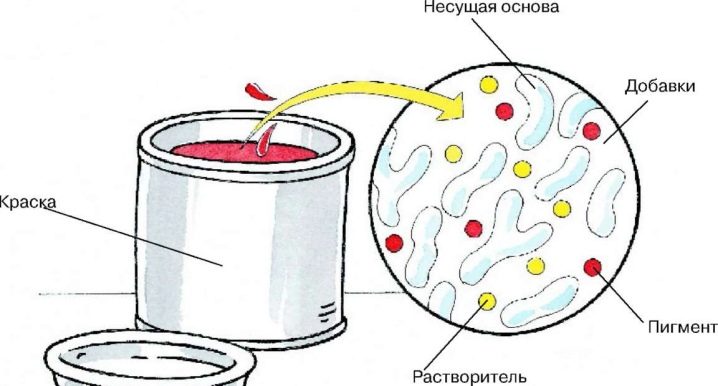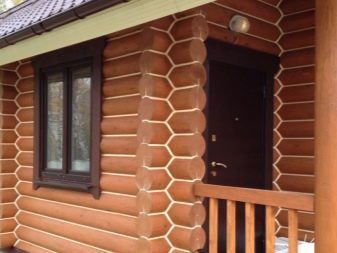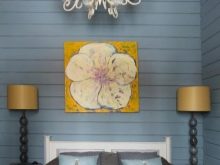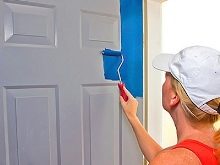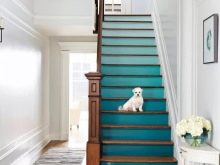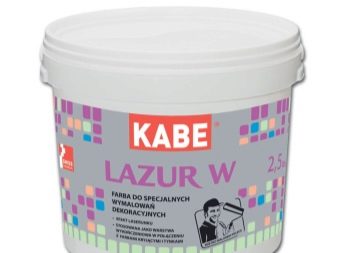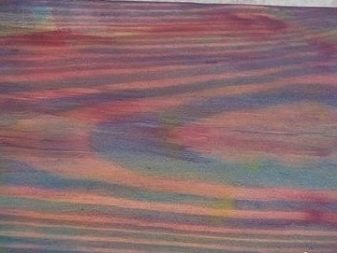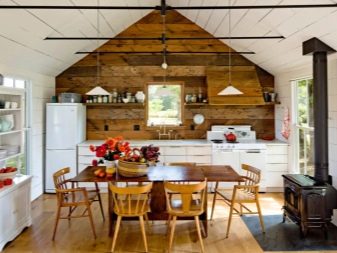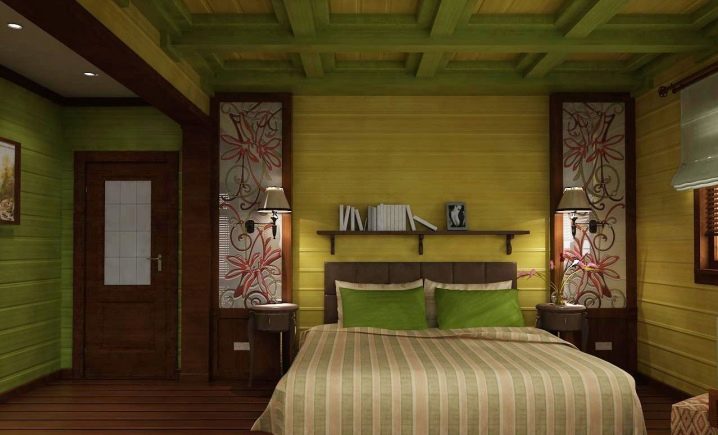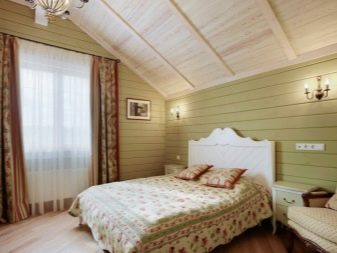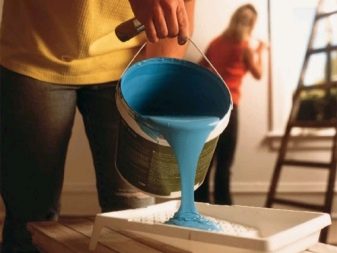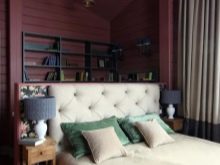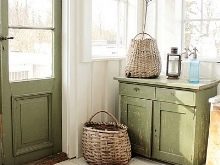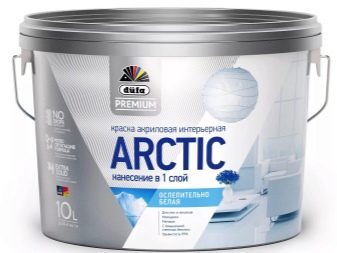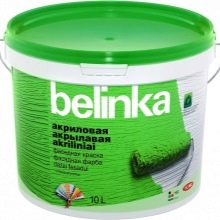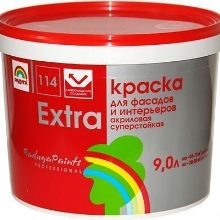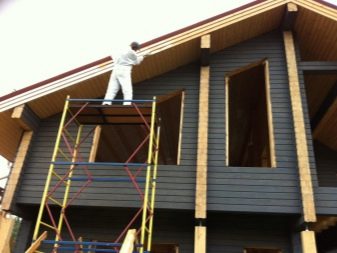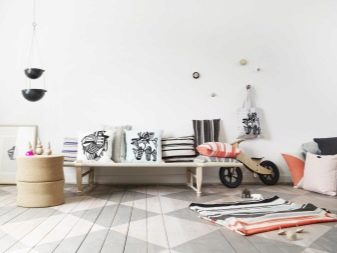Acrylic paints for wood: features of choice
Acrylic paints in the construction market appeared relatively recently. Previously, they were used only in painting. But with the help of scientific and technical progress, the scope of application of this material has expanded, and today acrylic paint is widely used both for decorative art and for repair and finishing works.
Distinctive features
In wooden housing construction, acrylic paint has replaced oil formulations due to its high performance properties, which allow to reliably protect wooden structures for a long time and at the same time provide an attractive appearance of any structure.
The main feature of any acrylic paint is its water solubility - that is, until drying it is easily removed with water. When the composition dries, it forms on the surface of the material a durable layer that is not washed off with water.
Acrylic dyes have a unique composition, due to which painted surfaces have a bright color that does not change over time, and durable, not prone to cracking coating.
After drying, the acrylic layer continues to maintain its elasticity, so that it does not pose a danger of temperature fluctuations or air humidity. That is why this paint is widely used for processing wood, both inside the building and outside.
Acrylic compositions differ in relative quickness of drying, although this indicator depends on the quality of preparation of the substrate, on the type of wood, and on environmental conditions. The limiting period of the final drying is usually limited to 3-4 days.
Composition
The main components of acrylic dyes are acrylic acid or acrylic emulsion, which, in turn, consists of polymethacrylates and polyacrylics, water and pigment, which determines the color of the finished product. The acrylic component in the composition of the paint acts as a kind of link,which allows you to combine water and color, and at the same time provides the set of properties that have a two-component acrylic paints based on water.
The pigment is a fine powder, which in addition to color, gives the basic composition increased strength. Coloring pigments used to make acrylics have a very rich color range.
The choice of the desired shade is made using special computer programs.
In addition, the composition of acrylic dyes for wood contains:
- Plasticizers - components that ensure the elasticity of the paint layer. Due to their presence, even when wooden structures shrink, acrylic paint does not crack;
- Hardeners. Substances that accelerate the process of hardening of the paint and ensure its high strength and durability;
- Matting agents - give the painted surface dullness;
- Excipients also contribute to the technical performance of the final product. They simplify the process of storage, transportation and application of paint, act on the process of film formation, ensure the stability and long service life of paint coatings.These include emulsifiers, stabilizers, thickeners, surfactants, defoamers, initiators, organic solvents.
Scope of use
The scope of acrylic colorful compositions for wood is quite diverse.
To date, this type of paint is best established as a finishing material for the facades of wooden houses from timber and logs. They paint the surface of the walls, hemming overhangs of roof, trim, decorative fencing terraces. The use of acrylic-based compounds helps to reliably protect a wooden building outside from natural influences. In addition, the abundance of color options allows you to realize the most original design solutions.
Acrylic paint is an indispensable assistant inside wooden buildings. Due to its high decorative and operational properties, it can be used for painting practically any elements inside the room - walls, slopes, interior platbands, ceilings, railings, stairs, interior doors, wooden windows. Moreover, such a coating can be applied not only to clean wood, but also to materials made on its basis (MDF, particle board).
Dye fits well and on wooden surfaces, and on the putty covering them. Due to the ability to pass air, the coating created by acrylic water-based compounds protects the wood well from the processes of decay, which is most important for the reliability of a wooden house.
Also, acrylic paints are used for painting on wood and decoupage. Special professional dyes are intended for this. In this area of creativity, acrylic paint is considered the best material. The painting made with their help looks flawlessly beautiful.
In addition, these dyes can immediately without additional efforts to strengthen the surface on which the drawing is applied, and protect it from fading and moisture.
Acrylic acid dyes are widely used in furniture decoration. If you plan to paint the furniture with your own hands, then this material will be the best choice, because it does not have a specific smell and is not harmful to human health. In addition, the paint due to good adhesion perfectly falls on the already painted surface and dries quickly.And acrylic dyes with a lesser effect emphasize the structure of the material of wooden furniture and at the same time give it the desired shade.
Advantages and disadvantages
The main advantages of acrylic dyes:
- Water solubility - the most important advantage of this type of dyes for wooden surfaces. Thanks to this property, acrylic paints are simple and safe to use. Even a professional will not be able to work with them; moreover, they will not have to spend additional funds to purchase solvents;
- Elasticity. Acrylic compositions even during drying retain this property, so that the paint layer does not crack even during the shrinkage of the wooden structure, with strong humidity and sudden changes in weather conditions;
- UV Resistance. Surfaces treated with acrylic-based dyes retain their original color for quite a long time;
- Vapor permeability and hydrophobicity. Due to these qualities of the polymer layer, timely removal of excess moisture from wooden surfaces is ensured, which makes this type of dye most suitable for wood, since it allows to increase its life expectancy several times;
- High degree of hiding. When applied to complex surfaces in two layers, a uniform and densely colored surface with a rich and bright color is created. This property also ensures the absence of sagging and paint stains;
- Long service life of paint coating. Most manufacturers give a guarantee on their products in 5-10 years;
- Ease of cultivation and tinting. The dye can be diluted with water to the desired consistency and on its own to make tinting with the help of special pigments designed specifically for acrylic compositions. But this is not the best option. It is much easier to buy paint in the store and in the same place to paint it in the desired color by selecting it in the manufacturer’s catalog;
- Environmental friendliness. Acrylic dyes do not contain harmful substances that can be harmful if the vapors of the dye are inhaled or on the skin; that is, toxicity is a property that is completely absent in this product. Therefore, such compositions can be used in residential and non-residential premises;
- Quick drying The layer of acrylic coating pretty quickly sets and, under good external conditions, quickly gains strength, which allows to reduce the time for finishing work;
- The width of the choice of colorswhich are presented in more than 15,000 colors and shades;
- Fire safety, and also simplicity of care of surfaces and a possibility of the subsequent polishing of the painted surface.
Disadvantages:
- Paint freezing at negative temperatures, which further makes it unsuitable for use;
- Instability to certain types of solvents;
- Incompatibility with other paints, film formers;
- High price.
Colors
The color palette of acrylic dyes is very rich. Each manufacturer has its own set of colors, ranging from white to black. As a rule, base compositions are white. By adding the appropriate pigment, they easily become colored.
Acrylic may also have varying degrees of gloss. As a result, the painted surface will look as glossy or matte.
Manufacturers
Leading position in the market of acrylic materials for painting is a Finnish company. Tikkurila. The compositions well protect the wood from rain, snow and sun, prevent the processes of decay due to the use of a three-layer application system.
Well proven dyes Dufa (Germany). They are manufactured using modern technologies and the latest equipment, safe for human health.
Also widely distributed in the Russian paint market from Estonian (Pinotex ultra), Slovenian (Belinka)English (Dulux) manufacturers.
Russian manufacturers are also not lagging behind their foreign competitors. They have a lower price, but at the same time demonstrate a decent quality of their products. These companies include "Aquatex", "Yaroslavl paints", "Extra". Drevoplast.
How to choose?
The first thing that begins the choice of dye - is the definition of the object of painting. Depending on it the structure will be chosen - for internal or for front works. Exterior paints are more resistant to ultraviolet and moisture, internal ones are characterized by increased abrasion resistance. As a rule, the facade covering requires updating at least once in 3-5 years.
Therefore, the acquisition of very expensive paints for these purposes is a rather wasteful and not always justified act. It is better to stop at something average. The choice of paint for dyeing wood indoors should be based on the environmental friendliness and harmlessness of the composition for health.
And if the painting will be performed in the nursery, then dyes should be preferred, which have an indication of their hypoallergenicity.
If we are talking about facade dyes, then when choosing a color it is necessary to proceed from the fact that light colors reflect heat and light better. Such paints are most suitable for wooden buildings located in a warm climate zone, where light surfaces will overheat less, and therefore the paint on them will last longer. The northern regions are more disposed towards the bright and saturated colors of the facades.
It is necessary to approach the choice of the producer especially carefully. You should not buy cheap products of unknown brands, otherwise you can just spoil the wooden structure and throw money away to the wind. It is better to give preference, albeit not to the most promoted product, but with reliable characteristics and a corresponding price. In any case, you should first examine all suitable for these works compositions, their properties, consumption and service life, evaluate the color range, and only after that make a decision on the choice of a manufacturer.
If there is a fairly large amount of paint work to be done, then the best and more economical option is to purchase material in buckets of 20 l.If you want to paint some elements outside or inside a wooden house, you can choose the packaging in buckets of 3, 5, 7 liters.
For painting small surfaces or decorating furniture or various handicrafts made of wood spray paint suitable in cans.
You will learn more about how to transform an old chest of drawers with acrylic paint.



